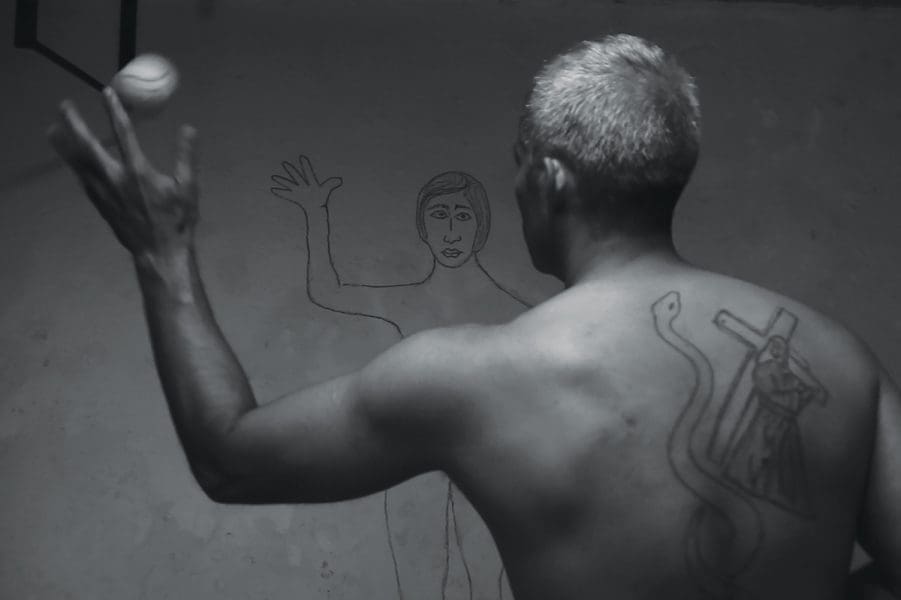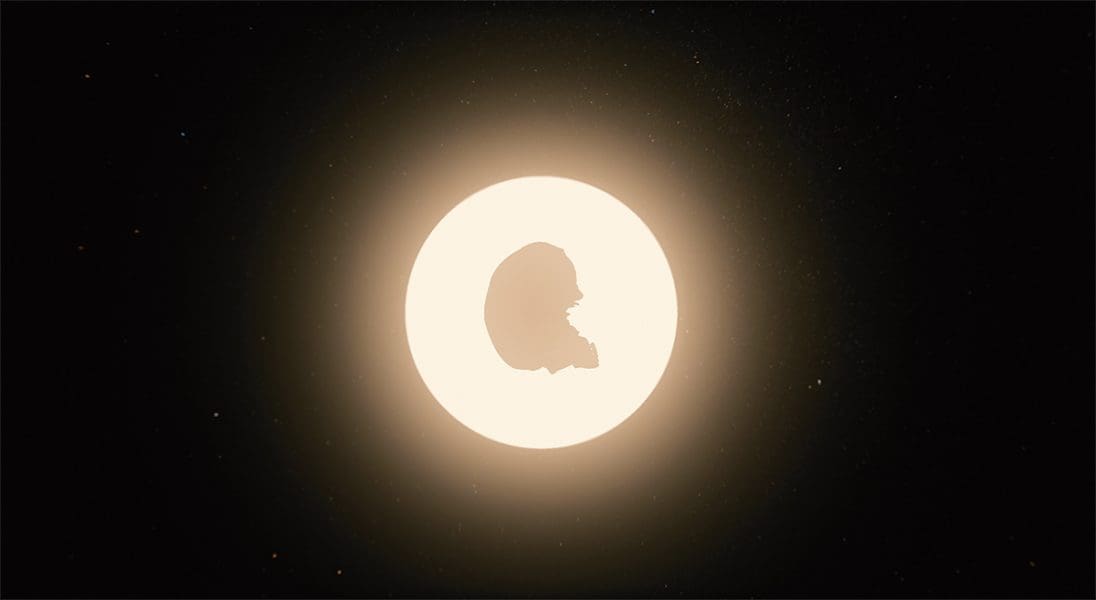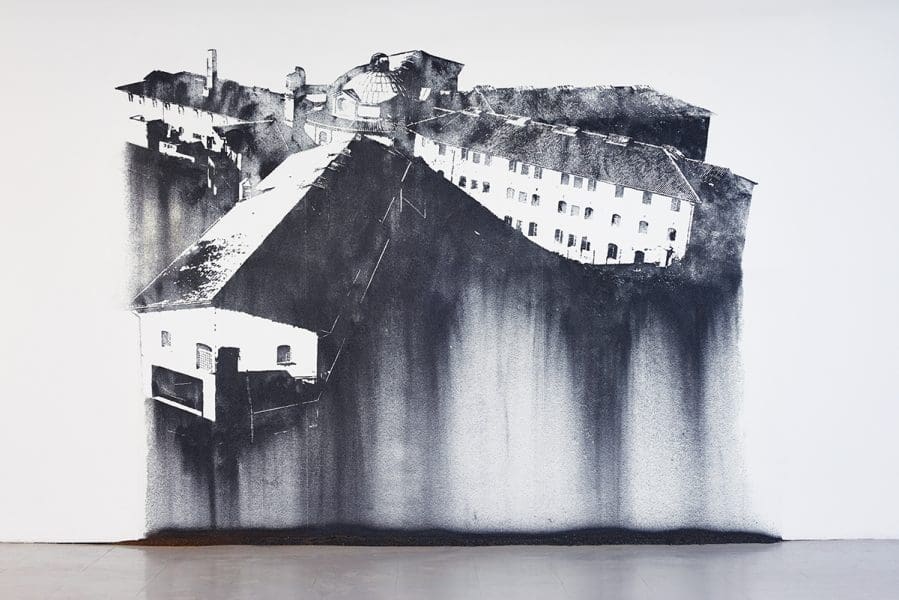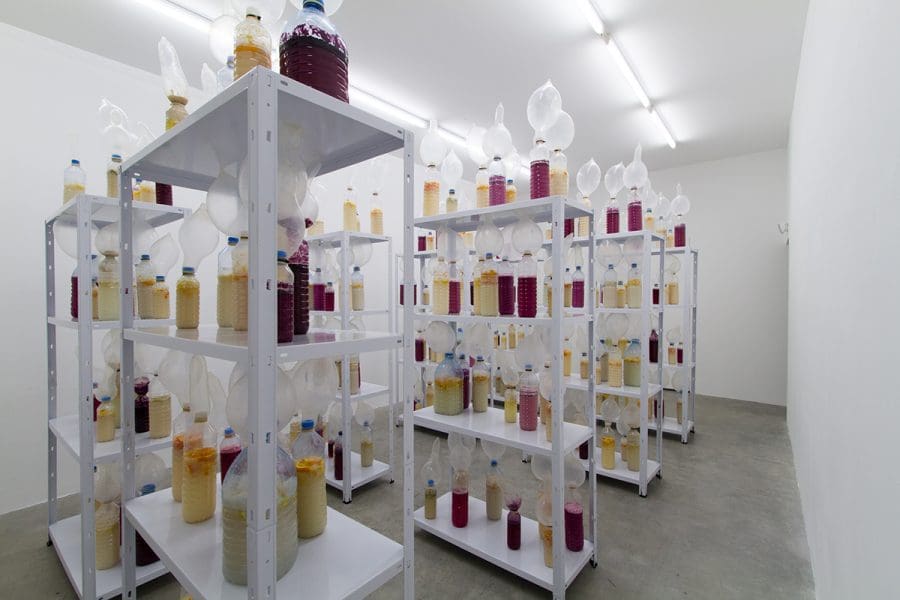
Making Space at the Table
NAP Contemporary’s group show, The Elephant Table, platforms six artists and voices—creating chaos, connection and conversation.




With a brutal history as a former penal colony, Tasmania is a fitting place to stage an exhibition based on incarceration. Tasmanian Museum and Art Gallery (TMAG) has done just that with A Journey to Freedom, on view during Dark Mofo – the Museum of Old and New Art’s annual winter solstice festival. Through a broad-ranging selection of photography, sculpture, installation and virtual reality, the exhibition features 13 artists exploring the premise from a national and international perspective.
Geneva-based Barbara Polla has curated A Journey to Freedom in tandem with Mona’s international curator, Olivier Varenne and Mary Knights, senior curator at TMAG. Although trained as a doctor and medical researcher, Polla has maintained a strong interest in human rights, freedom and imprisonment. Over the course of her varied career, Polla has been a writer, a member of the Swiss National Parliament and the co-director of Geneva gallery, Analix Forever.
Covering local issues like Tasmania’s convict past through to recent occurrences at Hobart’s Risdon Prison, A Journey to Freedom also looks at off shore detention centres and experiences of imprisonment abroad. TMAG curator Mary Knights explains that “each of the included artists have been involved in researching and interrogating issues relating to imprisonment and social justice as an ongoing part of their practices.”
Specialising in video art and drawing, Polla has assisted in bringing together several artists working within these disciplines for the exhibition. Australian artist Shaun Gladwell previously worked with Polla at the Sherman Contemporary Art Foundation in 2015 and his virtual reality work, Orbital Vanitas 2016, is a major component of A Journey to Freedom. Set up in the TMAG’s central gallery, Orbital Vanitas gives viewers the immersive experience of being inside a giant human skull while orbiting the earth. As the skull spins, our perspective floats inside and outside of the skull, framing our view of the earth with bare eye sockets.
Documenting the curatorial development of A Journey to Freedom on her blog, Polla spoke out, saying that “in these times of political fear and chaos, the temptation of jailing anybody who diverges – from subversive teens to migrants, from political dissidents to journalists – seems to be raised every day.”
Reflecting Polla’s thoughts, a number of artists have created work specifically for A Journey to Freedom and respond directly to aspects of Tasmanian history. French artist Nicolas Daubanes spent time in Tasmania researching the architecture and colonial history of Port Arthur to create his site-specific drawing installations while artist and poet Robert Montgomery (UK) engages with the buildings of Hobart’s Sullivan’s Cove using light, text and sculpture to evoke the emotional and physical turmoil experienced by Tasmanian Aboriginals, displaced convicts and the broken families they had left behind.
Referencing more recent events in Tasmania’s history is Jean-Michel Pancin whose work incorporates an original door from Hobart’s Risdon Prison, dubbed the ‘Pink Palace’ in the 1960s by The Mercury newspaper for the incongruous pink paint covering its concrete facade.
Presented like a shrine to those once held captive, one of Pancin’s best known iterations of this series is In Memorium 2016, an installation at Berkshire’s Reading Prison using the door of a cell formerly occupied by Oscar Wilde.
Also included in the exhibition are works by celebrated Indigenous photographer Ricky Maynard and comics journalist Sam Wallman, whose long-form illustrated interview At Work in Our Detention Centres: A Guard’s Story, won the Print and Online Media category at the 2014 Human Rights Award. The exhibition is spread throughout temporary galleries and transitional spaces within the TMAG which lends a sense of impermanence and displacement to the positioning of the works and provocatively echoes the central themes of the exhibition.
Following on from the 2016 success of The Tempest, an exhibition curated for the TMAG and Dark Mofo by Juliana Engberg, A Journey to Freedom presents an internationally significant exploration of historical and contemporary experiences of imprisonment. As Knights concludes: “Having a guest curator who lives and works in Switzerland, the heart of Europe, ensures the artists and artworks selected represent a wide range of international perspectives. Consequently, this has also led to the inclusion of a number of artists and artworks that have never been seen in Hobart before.”
A Journey to Freedom
Tasmanian Museum and Art Gallery (TMAG)
8 June – 29 July